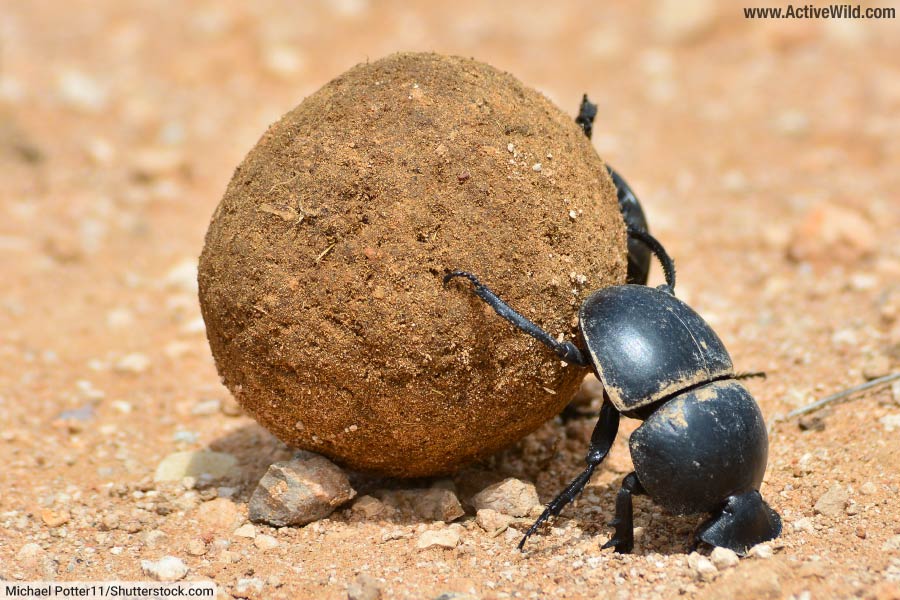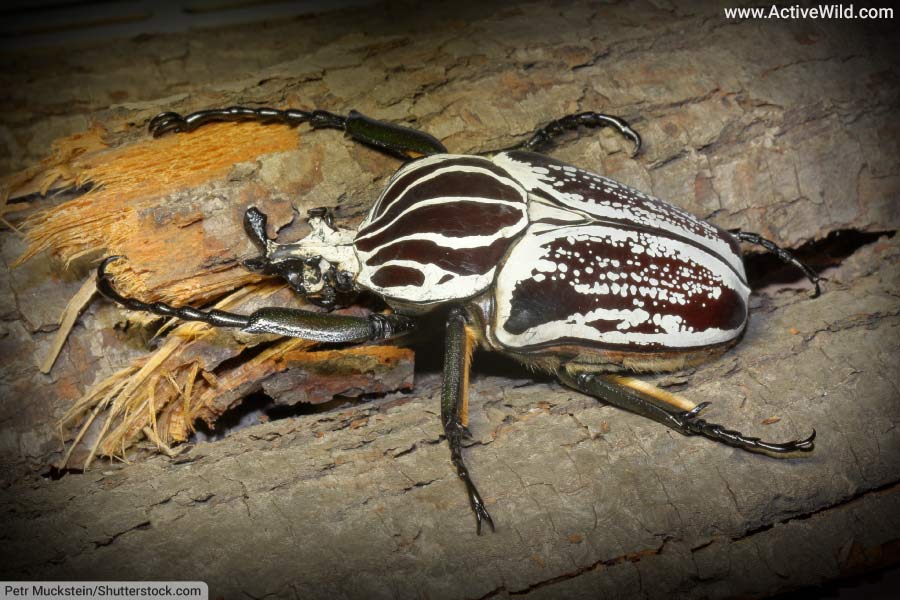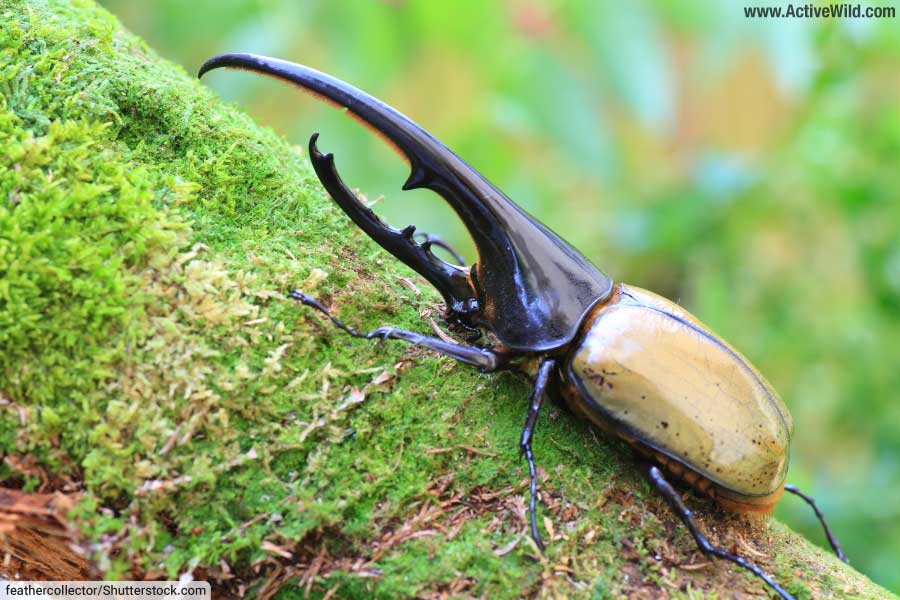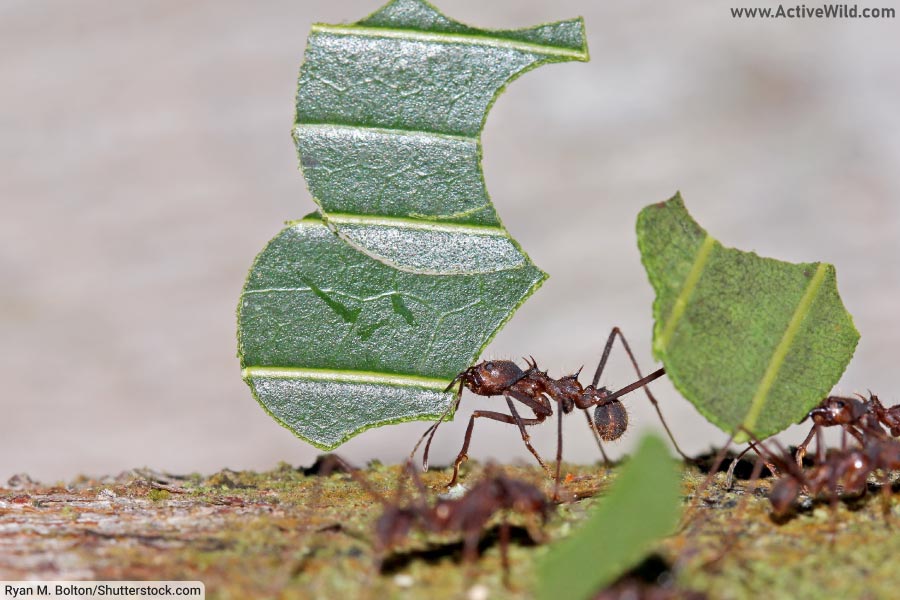Weird insects include assassin bugs, which are capable of inflicting a painful bite with a stabbing proboscis; the Australian walking stick, an oversized stick insect that resembles leaves; the Brazilian treehopper, with its alien-looking head; dung beetles, with their useful habit of eating animal dung; and the bizarre-looking Hercules beetle, the world’s longest insect.
You can find out about these and other strange insects below.
Have you seen any of these species? What's your favorite? Are there any weird insects we’ve missed out? Let us know in the comments section at the bottom of the page!
Weird Insects List
- Assassin Bug
- Australian Walking Stick
- Brazilian Treehopper
- Devil's Flower Mantis
- Dragon-Headed Caterpillar
- Dung Beetle
- Giant Long-Legged Katydid
- Giant Weta
- Goliath Beetle
- Hercules Beetle
- Hickory Horned Devil
- Hummingbird Moth
- Hummingbird Hawk-Moth
- Lantern Fly
- Leafcutter Ant
- Thorn Bug
You can see more weird species on the following pages:
Weird Animals Pictures & Facts
Weird Amphibians Pictures & Facts
Weird Birds Pictures & Facts
Weird Fish Pictures & Facts
Weird Mammals Pictures & Facts
Weird Reptiles Pictures & Facts
Weird Sea Creatures Pictures & Facts
Weird Plants Pictures & Facts
Ugly Animals Pictures & Facts
Discover More About Animals
Discover More About Insects
Assassin Bug

Scientific name: Reduviidae (family)
Family: Reduviidae
Assassin Bugs are a diverse group of predatory insects belonging to the family Reduviidae. They are characterized by an elongated head, large eyes, and a sharp, straw-like proboscis, or rostrum, which is used to stab and inject venom into their prey.
(Care should be taken if handling an assassin bug, as many of these insects are capable of inflicting an extremely painful bite.)
Assassin Bugs are found worldwide, inhabiting various terrestrial habitats. Their presence can be beneficial to humans as they help control pest populations by feeding on other insects, including agricultural pests.
Some species of assassin bugs native to North America are:
- Apiomerus species (Bee assassins): These insects prey primarily on bees, hence their common name.
- Zelus species (Leafhopper assassins): These assassin bugs feed on a wide variety of insects, including leafhoppers and other small arthropods.
- Pselliopus and Sinea species: They are also known to be generalist predators, feeding on various small insects.
- Triatoma species (Kissing bugs): These bugs are known for transmitting the parasite Trypanosoma cruzi, which causes Chagas disease in humans. The most common North American species are Triatoma sanguisuga and Triatoma protracta.
- Rhiginia cruciata (Corsair assassin bug): A predatory bug that is known to inhabit woodland habitats in North America.
- Reduvius personatus (Masked hunter): These bugs are known to prey on bed bugs and other small insects. The immature stages camouflage themselves by covering their bodies with dust and debris.
Australian Walking Stick

Scientific name: Extatosoma tiaratum
Family: Phasmatidae
IUCN Conservation Status: Least Concern
The Australian Walking Stick, also known as the Spiny Leaf Insect or the Macleay's Spectre, is a large, leaf-mimicking phasmid (member of the order Phasmatodea) found in Australia.
This weird insect is an impressive example of crypsis (camouflage), with its body, legs, and wings resembling dead or living leaves, depending on the individual.
The Australian Walking Stick is herbivorous, feeding primarily on eucalyptus leaves. The species is a popular pet due to its unique appearance and docile nature.
Brazilian Treehopper

Scientific name: Bocydium globulare
Family: Membracidae
IUCN Conservation Status: Not Evaluated
The Brazilian Treehopper, also known as the globe-bearing treehopper, is a small, alien-looking insect found in Brazil.
The species is known for its bizarre appearance, with an elongated, helmet-like structure covered in globular protrusions. These structures are thought to be used for camouflage and predator deterrence.
As nymphs, Brazilian Treehoppers feed on plant sap using their specialized mouthparts.
The Brazilian treehopper is just one of many strange insect species belonging to the treehopper family, Membracidae. Many members of this group resemble thorns, and are known as thorn bugs.
Devil's Flower Mantis

Scientific name: Idolomantis diabolica
Family: Empusidae
IUCN Conservation Status: Not Evaluated
The Devil's Flower Mantis, Idolomantis diabolica, is a large, striking praying mantis native to East Africa. It is known for its remarkable coloration and intricate patterns, resembling a flower in order to lure prey.
The Devil's Flower Mantis has an exceptional ability to mimic plant structures, using its body, legs, and wings to imitate leaves and petals. It is a predatory insect, feeding on other insects, including flies, moths, and butterflies.
Dragon-Headed Caterpillar (Common Nawab Butterfly)

Scientific name: Polyura athamas
Family: Nymphalidae
IUCN Conservation Status: Not Evaluated
The Dragon-Headed Caterpillar is the larval stage of the Common Nawab butterfly (Polyura athamas), native to Southeast Asia and parts of Australia. The caterpillar is named for its striking, dragon-like head, which serves as a form of mimicry to deter predators.
The Dragon-Headed Caterpillar feeds on the leaves of various plants, including those in the Fabaceae family. Upon reaching maturity, the caterpillar forms a chrysalis and undergoes metamorphosis into the adult butterfly.
Dung Beetle

Scientific name: Scarabaeinae (subfamily)
Family: Scarabaeidae
IUCN Conservation Status: Varies by species
Dung Beetles are a group of beetles belonging to the subfamily Scarabaeinae, known for their unique behavior of consuming and utilizing animal feces. They are found on every continent except Antarctica, inhabiting various habitats, including grasslands, forests, and deserts.
Dung Beetles play a vital role in nutrient cycling and waste decomposition by breaking down animal waste, which benefits soil health and plant growth.
You can find out more about beetles on this page: Beetles - The Ultimate Guide
Giant Long-Legged Katydid

Scientific name: Arachnacris corporalis
Family: Tettigoniidae
IUCN Conservation Status: Not Evaluated
The Giant Long-Legged Katydid (Arachnacris corporalis) is a large, arboreal (tree-dwelling) insect native to Southeast Asia. It is known for its elongated legs and body, resembling a combination of a grasshopper and a spider. It is the world’s largest katydid.
Primarily herbivorous, the Giant Long-Legged Katydid feeds on leaves and other plant material. It is an excellent jumper and uses its long legs to navigate its tree-dwelling habitat.
Like other katydids, the Giant Long-Legged Katydid has a loud mating call and is nocturnal.
Giant Weta

Scientific name: Deinacrida spp.
Family: Anostostomatidae
IUCN Conservation Status: Varies by species
Giant Wetas are a group of twelve large, flightless insects endemic to New Zealand. They belong to the genus Deinacrida, with individual species displaying varying sizes and appearances.
The Giant Wetas are among the heaviest insects in the world. The heaviest-known individual weighed around 70 grams (2.47 oz).
Wetas are primarily nocturnal and herbivorous, feeding on leaves, fruit, and other plant material, although they may occasionally consume other invertebrates.
Goliath Beetle

Scientific name: Goliathus spp.
Family: Scarabaeidae
Goliath Beetles are a group of large, tropical beetles belonging to the genus Goliathus. They are among the world's heaviest insects, with some individuals weighing up to 100 grams / 3.53 oz in their larval stage. A large adult may be up to 11 cm / 4.33 inches in length.
Goliath Beetles are native to Africa, inhabiting tropical forests and savannas. The adults are known for their striking patterns and colors, while the larvae feed on decaying plant matter.
You can find out more about beetles on this page: Beetles - The Ultimate Guide
Hercules Beetle

Scientific name: Dynastes hercules
Family: Scarabaeidae
IUCN Conservation Status: Not Evaluated
The Hercules Beetle is a large rhinoceros beetle native to the rainforests of Central and South America. Males are known for their impressive horns, which they use for combat and to attract females.
Hercules Beetles are the longest beetles in the world, with males reaching lengths of up to 17 centimeters 6.7 inches, including their horns. The larvae feed on decaying wood, while adults consume fruit and sap.
You can find out more about beetles on this page: Beetles - The Ultimate Guide
Hickory Horned Devil

Scientific name: Citheronia regalis
Family: Saturniidae
IUCN Conservation Status: Not Evaluated
The Hickory Horned Devil is the larval stage of the Regal Moth (Citheronia regalis), native to the eastern United States. The caterpillar is known for its large size, bright colors, and intimidating horn-like projections on its body.
Despite its fearsome appearance, the Hickory Horned Devil is harmless and does not sting. It feeds on a variety of trees, including hickory, walnut, and sweetgum.
With a wingspan that can exceed 6 inches / 15 cm, the regal moth is the largest moth found north of Mexico.
Hummingbird Moth

Scientific name: Hemaris spp.
Family: Sphingidae
IUCN Conservation Status: Not Evaluated
Hummingbird Moths are a group of moths belonging to the genus Hemaris, known for their remarkable resemblance to hummingbirds. These moths have a rapid wingbeat, hover in front of flowers, and feed on nectar using a long proboscis, just like their avian namesakes.
These distinctive moths inhabit various habitats in North America, Europe, and Asia. The four species native to North America are the:
- Hemaris thysbe (Hummingbird Clearwing Moth): This species is found across North America, from Alaska to Florida. It has a distinctive transparent "window" in each wing, giving it the "clearwing" name.
- Hemaris diffinis (Snowberry Clearwing Moth): Widespread across North America, this species feeds on the nectar of various flowers and is often mistaken for a bumblebee due to its similar appearance.
- Hemaris gracilis (Slender Clearwing Moth): This species is found primarily in the western United States, particularly in mountainous regions.
- Hemaris thetis (Rocky Mountain Clearwing Moth): As the name suggests, this species is found in the Rocky Mountain region of the United States and Canada.
You can find out more about these weird insects on this page: Hummingbird Moth Facts
Hummingbird Hawk-Moth

Scientific name: Macroglossum stellatarum
Family: Sphingidae
IUCN Conservation Status: Not Evaluated
The Hummingbird Hawk-Moth is a medium-sized moth native to Europe, Asia, and North Africa. It is known for its rapid wingbeat and hovering behavior, similar to hummingbirds, as it feeds on nectar from flowers.
The Hummingbird Hawk-Moth has a distinctive appearance, with a stout body, transparent wings, and a long proboscis. The IUCN has not evaluated its conservation status, but habitat loss, pesticide use, and climate change may pose threats to its populations.
You can find out more about these weird insects on this page: Hummingbird Moth Facts
Lantern Fly

Scientific name: Fulgora laternaria
Family: Fulgoridae
IUCN Conservation Status: Not Evaluated
The Lantern Fly, also known as the Peanut Bug or Alligator Bug, is a large, tropical planthopper native to Central and South America. It is known for its distinctive, elongated head that resembles the shape of a peanut or an alligator's snout. (Despite its name, the Lantern Fly does not produce light.)
This weird insect feeds on plant sap using its specialized, piercing-sucking mouthparts.
Leafcutter Ant

Scientific name: Atta spp. and Acromyrmex spp.
Family: Formicidae
Leafcutter Ants are a group of ants belonging to the genera Atta and Acromyrmex, found in Central and South America.
These weird insects are named for their remarkable behavior of cutting leaves and carrying them back to their underground nests.
The ants do not eat the leaves directly; instead, they use them to cultivate fungus gardens, which serve as their primary food source.
Leafcutter Ants form large, complex colonies with millions of individuals and display remarkable cooperation and division of labor.
You can find out more about leafcutter ants on this page: Leafcutter Ant Facts
Thorn Bug

Scientific name: Umbonia crassicornis
Family: Membracidae
IUCN Conservation Status: Not Evaluated
The Thorn Bug, Umbonia crassicornis, is a small, tree-dwelling insect found in Central and South America, as well as parts of the southern United States. It is known for its unique appearance, with a prominent, thorn-like projection on its back, which is thought to serve as camouflage and deter predators.
Thorn Bugs feed on plant sap using their specialized, piercing-sucking mouthparts.
Discover More With Active Wild
You can see more weird species on this page: Weird Animals Pictures & Facts
Discover more about the animal kingdom: Animals – The Ultimate Guide
Discover more about insects: Insects - The Ultimate Guide



Weirdest = lantern fly
Hickory horned devil = alien
Grossest = dung beetle